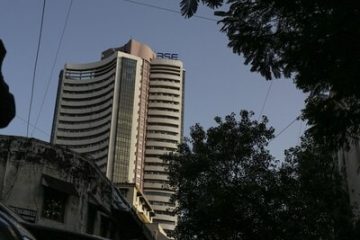Asian stocks inched higher on Friday, while the dollar was steady, keeping the pressure on the yen, as investors await inflation readings from Europe and the US that will likely dictate the path of interest rates globally.
A downward revision to consumer spending meant the US economy grew more slowly than expected in the first quarter, data showed on Thursday, weighing on Treasury yields and the dollar. [FRX/] [US/]
The revised GDP data also stoked expectations that the Federal Reserve has scope to cut rates this year, with market pricing putting a September cut at a coin toss, CME FedWatch tool showed. For the year, traders are pricing in 35 basis points of easing.
Financial markets have been biding their time for the main data event of the week – Friday’s April report on US core personal consumption expenditures (PCE) price index, which is the Fed’s preferred inflation gauge. Inflation report from the euro zone is also due on Friday.
Ben Bennett, Asia-Pacific investment strategist at Legal And General Investment Management, said the PCE reading should not provide much of a surprise.
“But investors will still be very sensitive to even small misses,” he said.
The shifting expectations over interest rates has kept the markets on edge, with European stock markets set for a subdued open. Eurostoxx 50 futures was down 0.04 per centand FTSE futures was flat.
MSCI’s broadest index of Asia-Pacific shares outside Japan rose 0.20%, pushing away from the three-week low hit on Thursday. Analysts said month-end rebalancing by fund managers helped lift equities in the region.
The index was set for a gain of 2.7 per centin May, rising for the fourth straight month.
China stocks also rose, with the blue-chip index up 0.20 per centwhile Hong Kong’s Hang Seng index gaining 1%.
The upturn in China’s markets came even as the nation’s manufacturing activity unexpectedly fell in May, an official factory survey showed on Friday. The soft outcome kept alive calls for fresh stimulus as a protracted property crisis continues to weigh on businesses, consumers and investors.
Meanwhile, markets have so far shrugged of the Donald Trump verdict after he became the first US president to be convicted of a crime on Thursday.
Traders are also looking over their shoulders for any hints of intervention from the Tokyo authorities as the Japanese yen flirts with levels that led to suspected bouts of intervention late in April and early this month.
The yen was last at 156.80 per dollar, having touched four-week lows of 157.715 on Wednesday. The currency weakened to its lowest in 34 years at 160.245 on April 29, sparking at least two suspected rounds of interventions. Data on Friday showed core consumer prices in Japan’s capital rose 1.9 per centin May on rising electricity bills but price growth excluding the effect of fuel eased, heightening uncertainty on the timing of the central bank’s next interest rate hike.
The dollar index, which measures the US currency against six rivals, was at 104.82, on course for 1.4 per centdecline in May, snapping a four-month winning streak.
The euro eased 0.12 per centto $1.08192 ahead of euro zone inflation data for May that is set to influence the European Central Bank’s policy path. The central bank is all but certain to cut rates in June but what comes after that remains uncertain.
Markets are pricing 60 basis points of ECB cuts this year.
In commodities, oil prices eased after a surprise build in US gasoline stocks weighed on the market. Brent futures was down 0.28 per centat $81.63 a barrel, while US West Texas Intermediate (WTI) crude CLc1 was down 0.35 per centat $77.64. [O/R]
First Published: May 31 2024 | 10:41 AM IST
Note:- (Not all news on the site expresses the point of view of the site, but we transmit this news automatically and translate it through programmatic technology on the site and not from a human editor. The content is auto-generated from a syndicated feed.))



